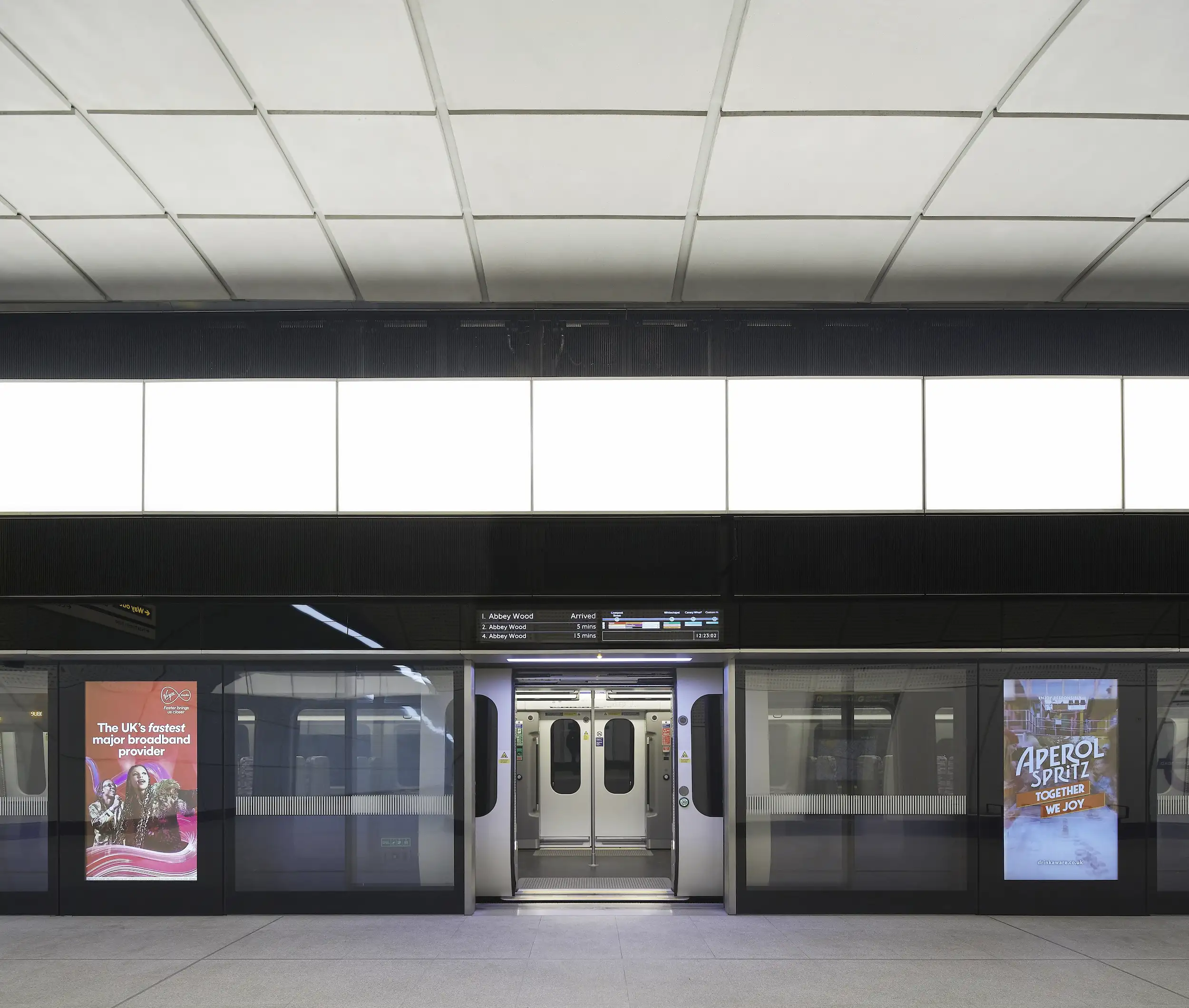The Elizabeth Line Wins 2024 RIBA Stirling Prize

The Elizabeth Line, winner of the 2024 RIBA Stirling Prize. Photo © Hufton+Crow
In a radical departure from precedent, the Royal Institute of Architects’ top project-based honor, the Stirling Prize, has not been awarded this year to a single building or single-site scheme but to the Elizabeth Line, London’s new urban-suburban line comprising 62 miles of track, 26 miles of new tunnels, 10 new transit stations, and 31 revamped stations. Inaugurated in May 2022 by Queen Elizabeth II just months before her death, the new line, a “triumph in architect-led collaboration” per RIBA president and prize jury chair Muyiwa Oki, transverses London from Heathrow Airport and Reading at the west to Shenfield and Abbey Wood in the east and accommodated 200 million passengers annually in its second year of operation. It is not classified as part of the London Underground Line.

Photo © Hufton+Crow
“It’s an uncluttered canvas that incorporates a slick suite of architectural components to create a consistent, line-wide identity–through which thousands of daily passengers navigate with ease,” added Oki.
Receiving the prize is the line-wide design team of Grimshaw with Maynard (graphics and wayfinding) AtkinsRéalis (engineering), and Equation (lighting design), which was responsible for platform architecture, passenger tunnels, escalators, station concourses, signage, furniture, fittings, finishes and supporting technology. Also involved were a larger project team for client Crossrail that included the architects responsible for each of the 10 new stations: John McAslan + Partners, Weston Williamson + Partners, Hawkins\Brown, AHR (formerly Aedas), Wilkinson Eyre, BDP, Adamson Associates, Allies and Morrison, and Fereday Pollard.
On behalf of the winning team, Grimshaw partner Neill McClements said: “The Elizabeth Line is a piece of infrastructure that has been transformative, not only for London’s transport network but also for many people’s lives, highlighting the role design plays in elevating our every day.”


Photos © Hufton+Crow
The Elizabeth Line was one of six, heavily London-based shortlisted projects for the prize announced in July: Chowdry Walk by Al-Jawad Pike (London), the the restoration of the National Portrait Gallery by Jamie Fobert Architects and Purcell (London), Park Hill Phase 2 by Mikhail Riches (Sheffield), Wraxall Yard by Clementine Blakemore Architects (Dorset), and London’s King’s Cross Master Plan by Allies and Morrison and Porphyrios Associates, which was announced as the winner of the People’s Vote ahead of the main prize ceremony held in London at the Roundhouse on October 16.

Photo © Hufton+Crow
“From major national infrastructure to brave and brilliant council-led housing, these varied schemes are united in making sensitive contributions to elevating everyday life, said Oki. “Whether raising the bar for social housing, upgrading city transportation or repurposing dilapidated buildings to create heritage-conscious urban and rural developments, each scheme thoughtfully adapts elements of our existing built environment.”
An exhibition showcasing all six 2024 Stirling Prize finalists will be on display at RIBA headquarters at 66 Portland Place in London through November 5.
First established in 1987 as the RIBA Building of the Year Award and later renamed in 1996 in honor of Pritzker Prize–winning British architect James Stirling, the prize is awarded to a building completed in the United Kingdom that has “made the greatest contribution to the evolution of architecture in the past year.” (Up until 2014, projects in the EU designed by RIBA member architects were also eligible). Past winners include the James Morden Centre, a day center for the elderly in London by Mae (2023); London’s Kingston University Town House, a multifaceted student center by Grafton Architects (2021); and the Bloomberg London office building by Foster + Partners (2018). The winner of the 2022 Stirling Prize went to the New Library at Magdalene College, Cambridge, which was one of several projects presented by architect Níall McLaughlin at RECORD’s 2024 Innovation Conference held earlier this month.




